Tomb 24
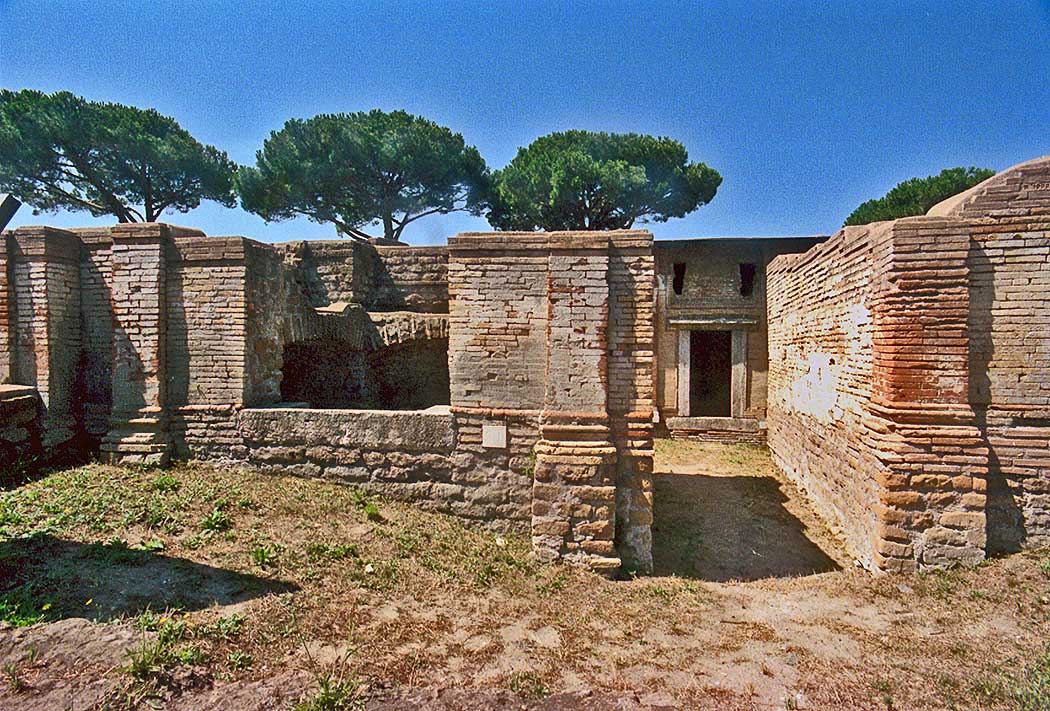
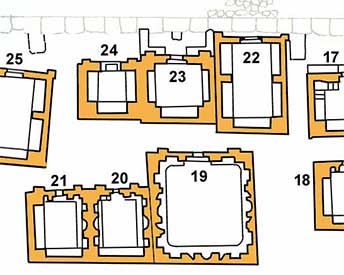 Tomb 24 is located on the left side of the block formed by tombs 22-24. Between the right wall of tomb 24 and the left wall of tomb 25 is a passageway to the tombs behind.
Tomb 24 is located on the left side of the block formed by tombs 22-24. Between the right wall of tomb 24 and the left wall of tomb 25 is a passageway to the tombs behind. The burial chamber was arranged for inhumation. The arcosolia are still containing traces of decoration. The paintings from the lower niche in the back wall, hunting scenes, are stored in the museum of Ostia (inv. nrs. 10112a and b). We see how the hunter with his dogs is driving wild animals to a hunting net. Another dog, with stretched neck, is running after a rushing deer. Between his legs we see a third dog with a hare in his mouth.
A second arcosolium represents a lion hunt. The lion is in the centre. To the right are two hunters holding round shields. To the left an animal is fleeing, perhaps a deer.
Here too we can speak of a Dionysian scene (see also tomb 26 and 34).
The upper part of tomb 24 is missing and formae have been found beneath the floor. The tomb dates from 200-210 AD.
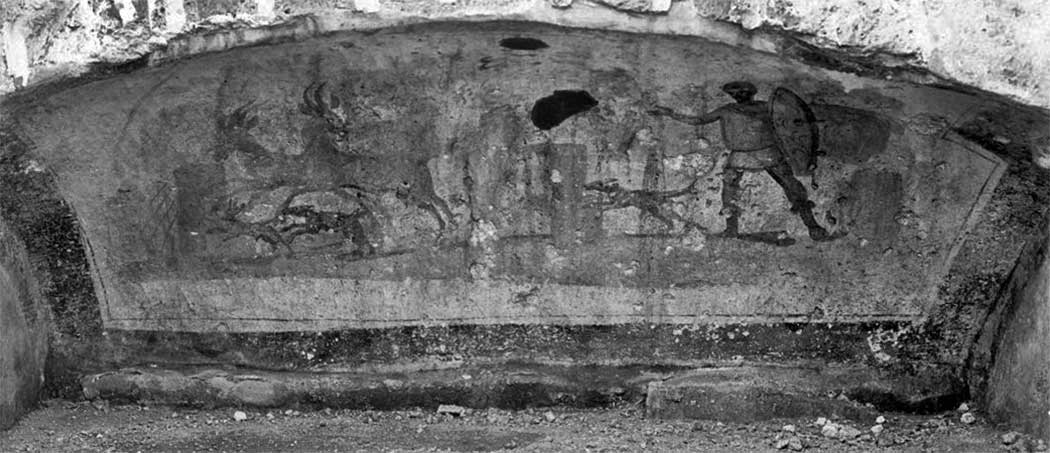
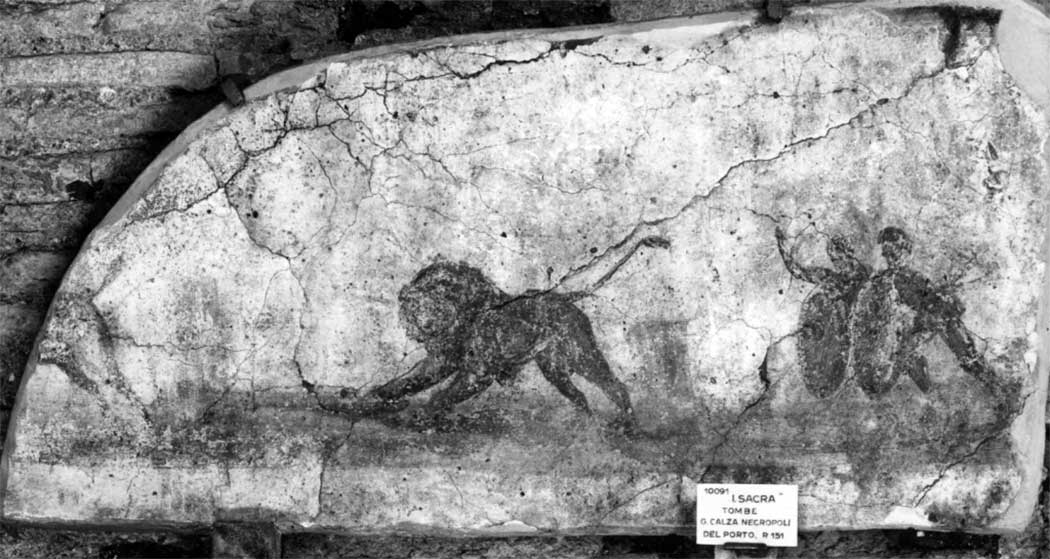
- Sources
- Russel Meigs - Roman Ostia, At the Clarendon Press 1973
- Guido Calza - Necropoli nell'Isola Sacra'(1940)
- Dr. Jan Theo Bakker.
- Hilding Thylander - Inscriptions du port d'Ostie (Lund C W K Gleerup 1952).
- Ida Baldassarre, Irene Bragantini, Chiara Morselli and Franc Taglietti - Necropoli di Porto, Isola Sacra (Roma 1996).
Isola Sacra Index

Speciale sectie over de Romeinse begraafplaats van Portus (Engels)....
Read more ...The resurfaced fleet of Pisa

In 1998, an incredible archaeological heritage was discovered by accident near the Pisa San Rossore railway station....
Read more ...Leptiminus
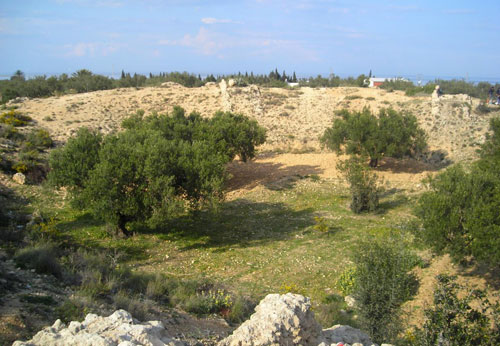
At the site of present-day Lamta on Tunisia's east coast, there was already a port city named Leptis Minor ....
Read more ...Roman maritime trade law

Roman law is the finest monument that Rome bequeathed to Western Europe....
Read more ...Sullecthum (Salakta)

In the Sahel, in the Tunisian province of Madhia, we find by the sea the small town of Salakta....
Read more ...
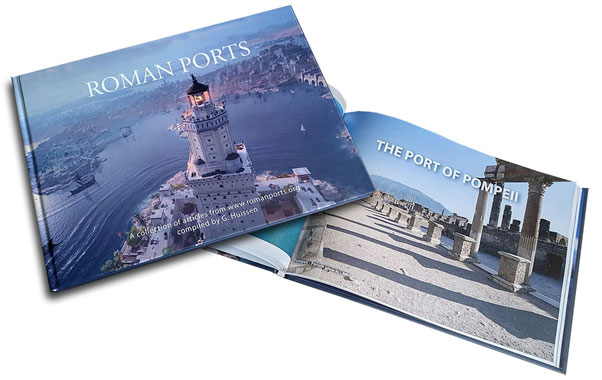
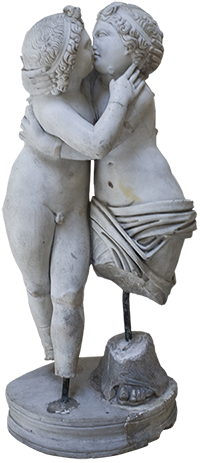 We are committed to providing versions of our articles and interviews in several languages, but our first language is English.
We are committed to providing versions of our articles and interviews in several languages, but our first language is English.